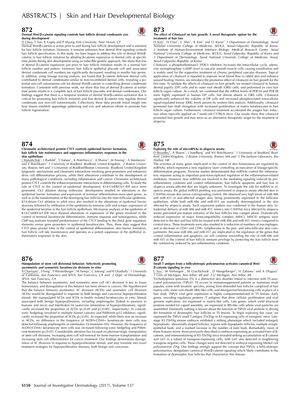Small T Antigen From a Folliculotropic Polyomavirus Activates Canonical Wnt/β-Catenin Signaling In Vivo
April 2017
in “
Journal of Investigative Dermatology
”
Wnt/β-catenin signaling hair follicle initiation dermal condensate CTCF epidermal differentiation skin barrier formation hair follicle cell fate asymmetric stem cell divisions symmetric stem cell divisions tissue homeostasis hyperproliferative stimuli cilostazol alopecia miRNAs inflammation hair follicle apoptosis alopecia areata small T antigen folliculotropic polyomavirus Trichodysplasia spinulosa Wnt signaling

TLDR A virus protein can activate a pathway that may lead to abnormal hair follicle development.
The document presents several studies related to skin and hair developmental biology. One study by Chen et al. at Yale University found that dermal Wnt/ß-catenin signaling is critical for hair follicle initiation and may regulate dermal condensate size non-cell autonomously. Malashchuk et al. demonstrated that the chromatin architectural protein CTCF is essential for epidermal differentiation, skin barrier formation, and hair follicle cell fate maintenance. Charruyer et al. from the University of California, San Francisco, showed that the balance between asymmetric and symmetric stem cell divisions is key to tissue homeostasis and can be dysregulated by hyperproliferative stimuli. Kim et al. from Seoul National University reported that cilostazol promotes hair growth and could be a therapeutic option for alopecia. Broadley et al. found that miRNAs play a role in controlling inflammation and hair follicle apoptosis in alopecia areata. Lastly, Syu et al. from the University of Michigan discovered that the small T antigen from a folliculotropic polyomavirus activates canonical Wnt/ß-catenin signaling in vivo, which may contribute to the formation of dysmorphic hair follicles in Trichodysplasia spinulosa.
